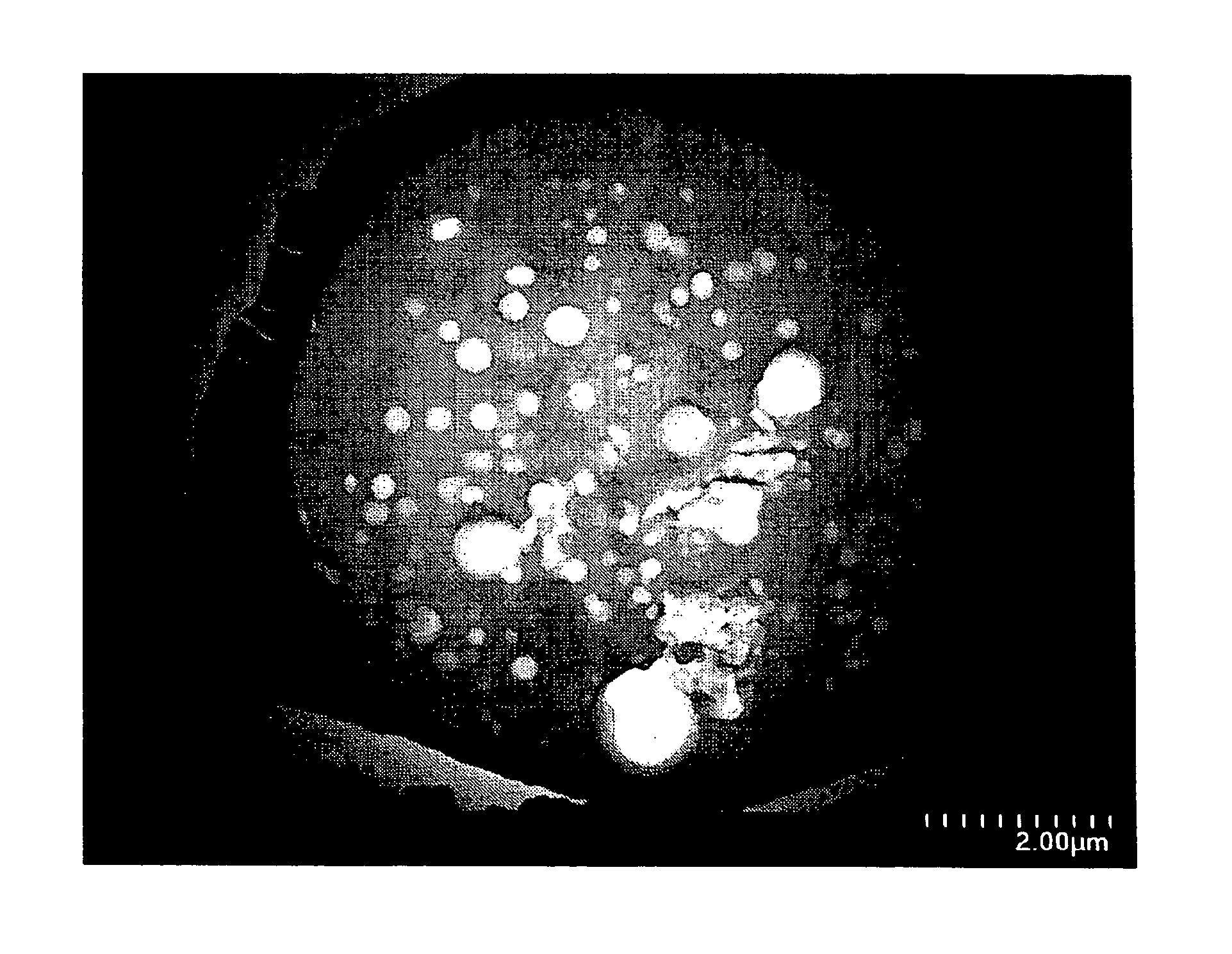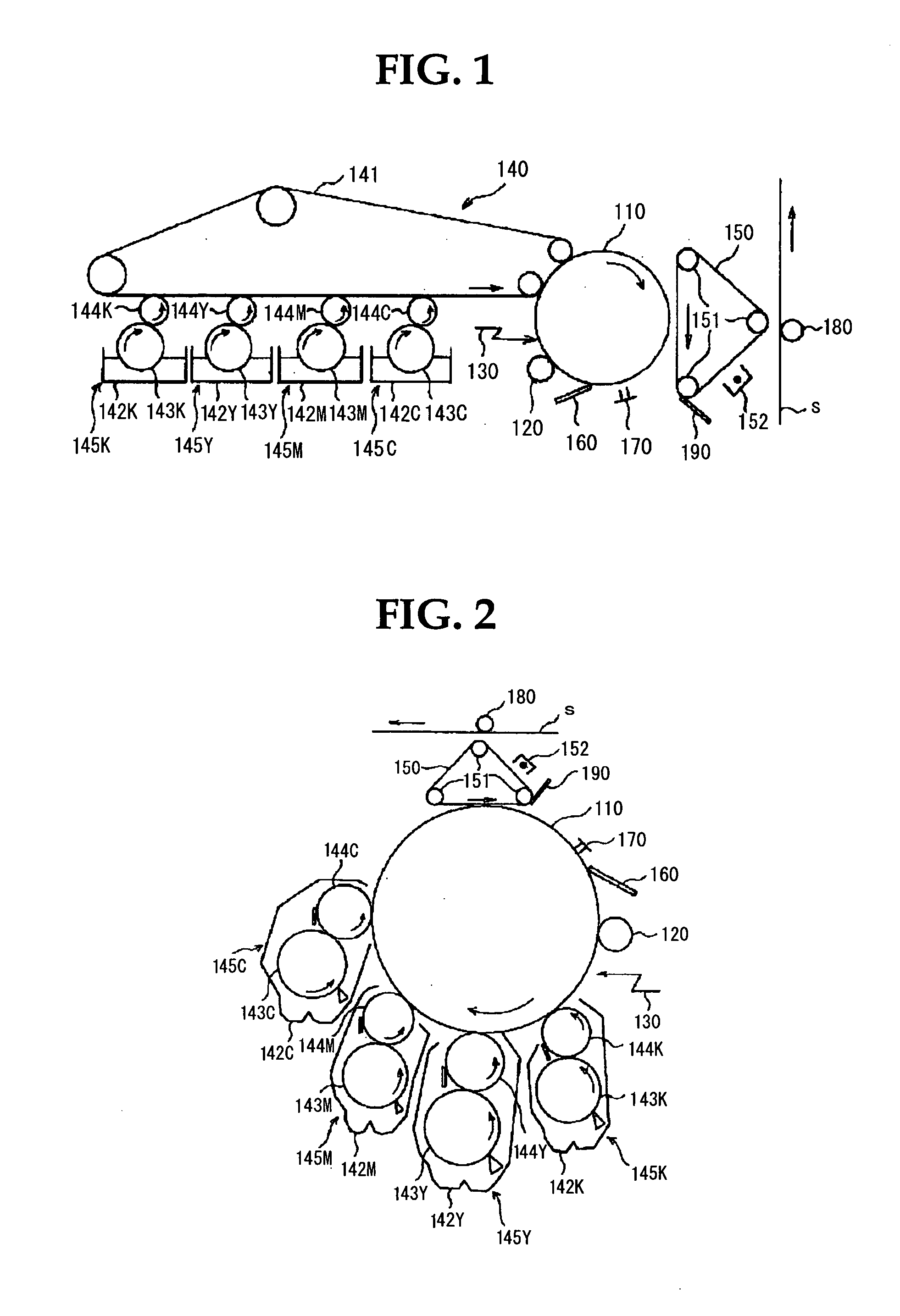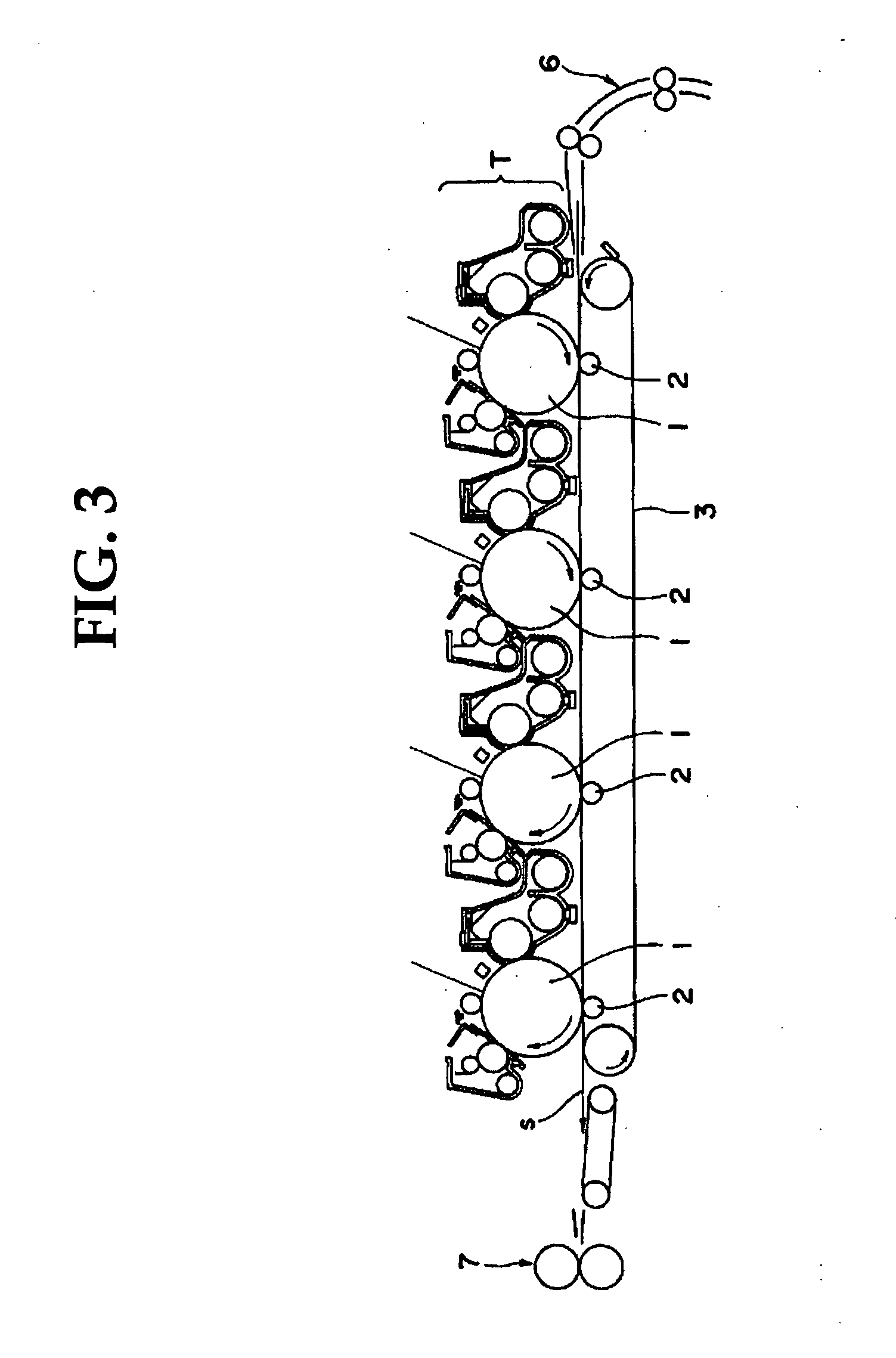Toner for developing electrostatic image, developer, image forming apparatus, process for forming image, process cartridge, and process for measuring porosity of toner
a technology toner cartridges, which is applied in the field of toner for developing electrostatic images, image forming apparatus, process for forming images, and process for measuring porosity of toner, can solve the problems of limited materials that can be used for toners, low yield, and still unsatisfactory levels of images created by full-color copiers, so as to improve the quality of toner. , the effect of improving the hollow
- Summary
- Abstract
- Description
- Claims
- Application Information
AI Technical Summary
Benefits of technology
Problems solved by technology
Method used
Image
Examples
example 1
[0215] Manufacture Example 1 (Synthesis of Organic Particulate Emulsion)
[0216] To a reaction vessel provided with a stirrer and a thermometer, 683 parts of water, 11 parts of the sodium salt of the sulfuric acid ester of methacrylic acid ethylene oxide adduct (ELEMINOL RS-30, Sanyo Chemical Industries, Ltd.), 166 parts of methacrylic acid, 110 parts of butyl acrylate, and 1 part of ammonium persulphate were introduced, and stirred at 3800 rpm for 30 minutes to give a white emulsion. This was heated, the temperature in the system was raised to 75° C. and the reaction was performed for 4 hours. Next, 30 parts of an aqueous solution of 1% ammonium persulphate was added, and the reaction mixture was matured at 75° C. for 6 hours to obtain an aqueous dispersion of a vinyl resin “particulate emulsion 1” (copolymer of methacrylic acid-butyl acrylate-sodium salt of the sulfuric acid ester of methacrylic acid ethylene oxide adduct). The volume average particle diameter of “particulate emuls...
example 2
[0243] A toner is obtained in the same manner as that in Example 1 except that “pigment / wax dispersion 1” was changed to “pigment / wax dispersion 2” which was obtained by the following conditions for preparing the oil phase.
[0244] (Preparation of Oil Phase)
[0245] Into a vessel equipped with a stirrer and a thermometer, 378 parts of “low molecular weight polyester 1,” 100 parts of carnauba / rice wax (weight ratio of carnauba to rice is 7 to 3), and 947 parts of ethyl acetate were introduced, and the temperature was raised to 80° C. with stirring, maintained at 80° C. for 4 hours, and cooled to 30° C. in 1 hour. Next, 500 parts of “masterbatch 1” and 500 parts of ethyl acetate were introduced into the vessel, and mixed for 1 hour to obtain “initial material solution 2.”
[0246] To a vessel, 1324 parts of “initial material solution 2” were transferred, and carbon black and wax were dispersed using a bead mill (ultra bead mill available from Imex) under the conditions of liquid feed rate ...
example 3
[0249] A toner is obtained in the same manner as that in Example 1 except that the processes of emulsification and solvent removal were changed to have conditions as described below.
[0250] (Emulsification and Solvent Removal)
[0251] In a vessel, 749 parts of “pigment / wax dispersion 1,” 115 parts of “prepolymer 1” and 2.9 parts of “ketimine compound 1” were placed and mixed at 5,000 rpm for 2 minutes by a TK homomixer (available from Tokushu Kika Kogyo Co., Ltd.), then 1200 parts of “aqueous phase 1” were added to the vessel and mixed by the TK homomixer at a rotation speed of 13,000 rpm for 10 minutes to obtain “emulsion slurry 3.”
[0252]“Emulsion slurry 3” was placed in a vessel equipped with a stirrer and a thermometer, then the solvent was removed at 30° C. for 6 hours and the product was matured at 45° C. for 10 hours to obtain “dispersion slurry 3.”
[0253] Like Example 1, a cross section of the thus obtained toner particle was prepared and observed. Like Example 1, at least one ...
PUM
| Property | Measurement | Unit |
|---|---|---|
| Thickness | aaaaa | aaaaa |
| Thickness | aaaaa | aaaaa |
| Diameter | aaaaa | aaaaa |
Abstract
Description
Claims
Application Information
 Login to View More
Login to View More - R&D
- Intellectual Property
- Life Sciences
- Materials
- Tech Scout
- Unparalleled Data Quality
- Higher Quality Content
- 60% Fewer Hallucinations
Browse by: Latest US Patents, China's latest patents, Technical Efficacy Thesaurus, Application Domain, Technology Topic, Popular Technical Reports.
© 2025 PatSnap. All rights reserved.Legal|Privacy policy|Modern Slavery Act Transparency Statement|Sitemap|About US| Contact US: help@patsnap.com



